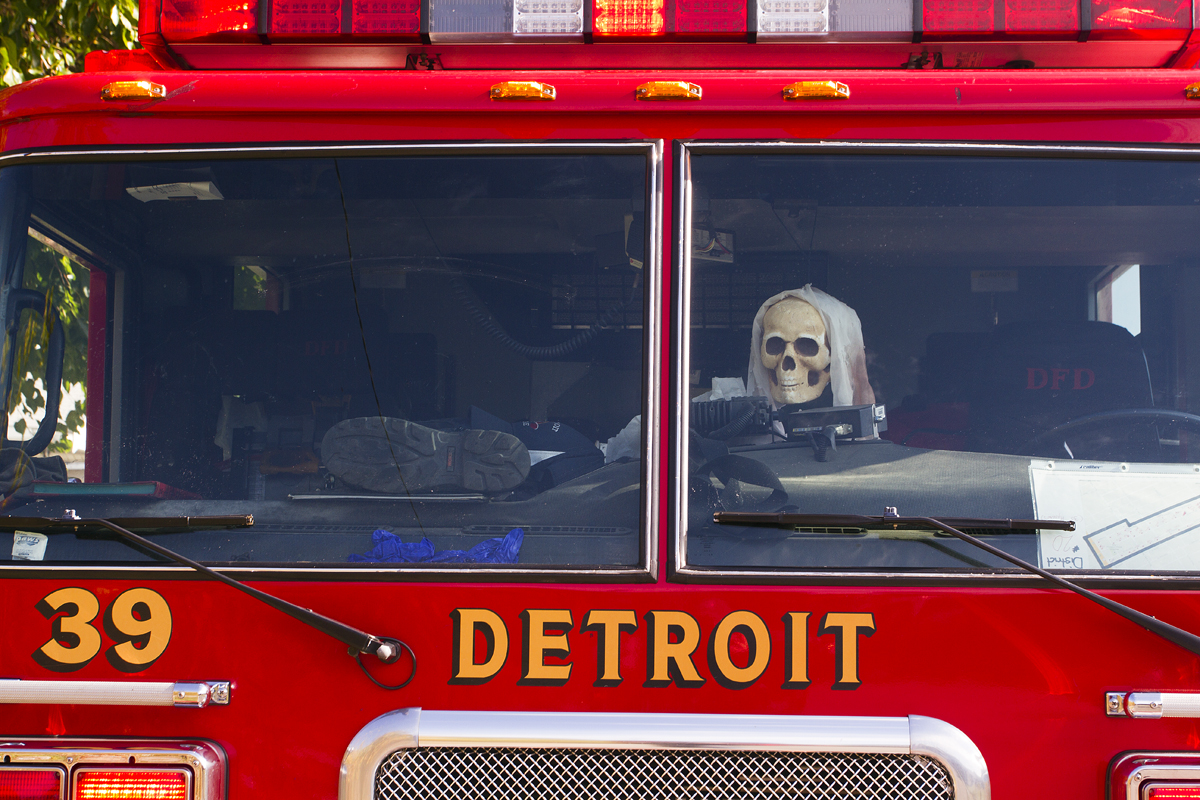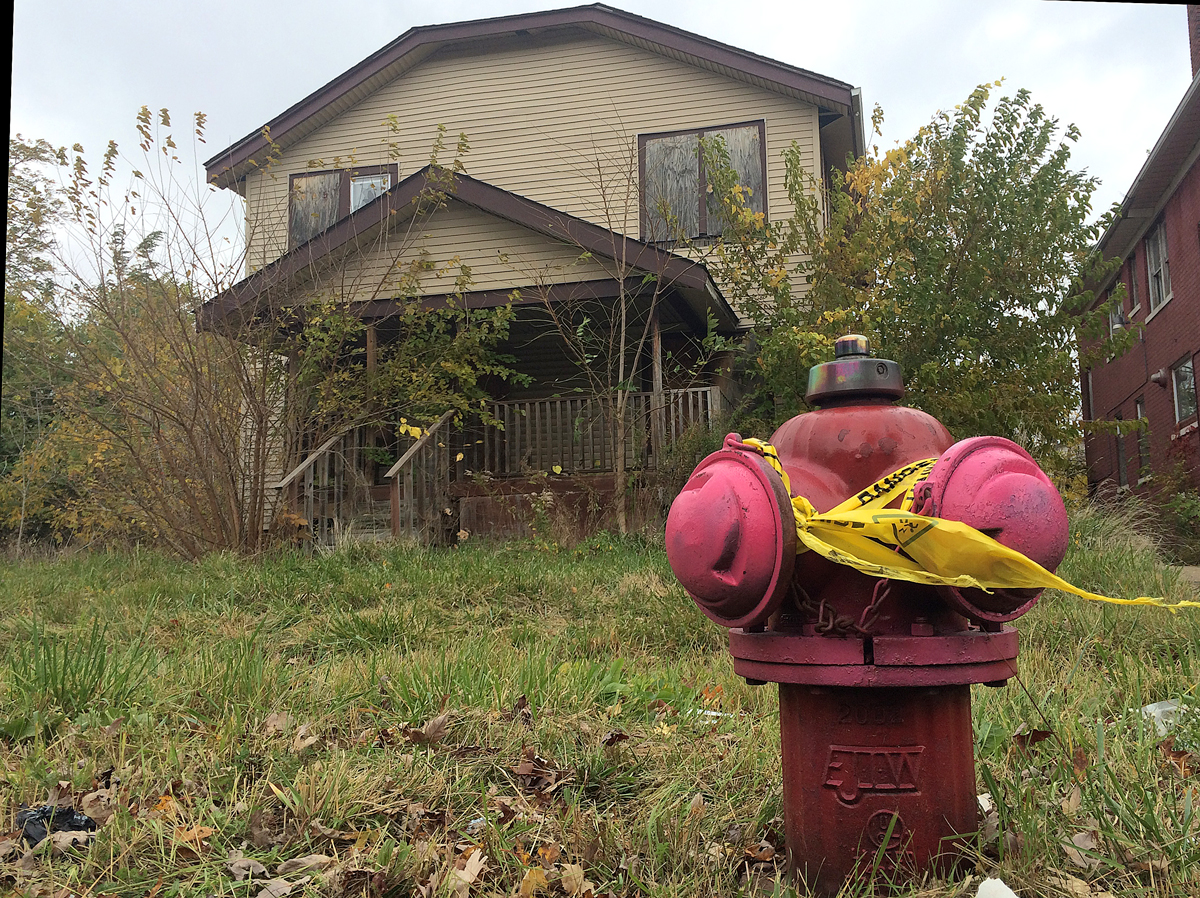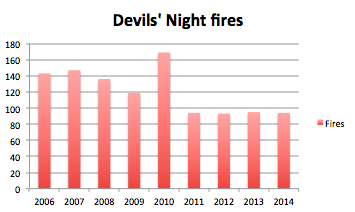
The beleaguered Detroit Fire Department has struggled all year with defective hydrants, an aging fleet of rigs, uncertified equipment and a shortage of firefighters.
That could spell trouble for firefighters tonight as they brace for Devil’s Night, the pre-Halloween tradition of arsonists setting dozens of houses and buildings ablaze.
Here are five challenges during Devil’s Night:
1. Detroit’s aging fleet of fire engines and trucks is beset with problems. In September alone, at least 11 of the city’s ladder trucks, which are used to rescue people and fight fires from above, were out of service for mechanical failures. They have broken down en route to fires, and their ladders have failed to raise.
The city’s busiest truck – #22 – which covers southwest Detroit, has no working aerial ladder or pumps, serving only as a taxi to ferry firefighters. The second busiest ladder truck – #23 – broke down at two fire scenes in September.
Although the city recently received 10 new engines, more than half of its engine companies still rely on aging rigs riddled with problems, from nonworking pumps to bad brakes. Engine 41’s company, one of the most important on the east side, has been stuck with a replacement rig that broke down several times in the past week.
At least four rigs have gone out of service for repairs since Thursday.
To minimize the risk of problems, the Fire Department is sending three engines, instead of two, to every structure fire and added rigs to the fleet for Devil’s Night.
“The GSD (General Services Department) has worked overtime the past week to make sure that all first-line and reserve rigs are in proper working order,” interim Fire Commissioner Eric Jones said. “In addition, four extra engine companies will be placed in service during the three-day Angels’ Night period. These are loaded with equipment and are ready to go.”

2. Broken fire hydrants and low water pressure continue to hamper firefighting efforts, causing house fires to spread and burn longer. A hydrant failed to turn off and was placed out of service Thursday morning after a suspicious fire burned three houses at W. Nevada and John R.
The hydrant was still out of service this morning.
In just the past week, more than a dozen hydrants malfunctioned at house fires. On Monday, four hydrants failed as flames devoured a house and spread to a neighboring home at Fordham and Queen on the east side.
The Detroit Water and Sewerage Department, which is responsible for the fire plugs, sent out extra crews in the past few weeks to fix the hydrants.
“We fixed 400 hydrants last week alone, and DWSD is deploying eight crews to address any hydrant issues that may pop up,” said Mayor Mike Duggan’s spokesman Dan Austin.
3. The city’s emergency alert system has been causing delays for some firefighters who say they aren’t receiving notices of fires until a few minutes after being dispatched. In just five days, two people died in separate house fires after Detroit firefighters were delayed by a malfunctioning alert system in late September and early October.
Early Thursday morning, which was the start of the three-day Devil’s Night period, Engine 30 was delayed by at least three minutes after a late alert. Early this morning, dispatchers couldn’t reach Engine 32 to respond to a reported fire on the east side.
“Engine 32 is out of radio contact,” a dispatcher warned a chief.
Austin said the city has been working on the system.
4. When firefighters arrive to fires, they often rely on uncertified, outdated equipment. The city has failed to meet deadlines to test pumps, hoses, self-contained respirators, pressurized extinguishers and aerial and ground ladders. Many firefighters also have defective or deteriorating helmets, boots and coats.
That leaves the vital equipment vulnerable to problems during emergencies.
Earlier this month, the city was forced to take out of service 173 of its 420 air tanks because they were overdue to be tested in violation of state and federal safety laws. The city has since tested the air tanks and began receiving shipments of new ones.
5. The weather is expected to be relatively warm and free of rain tonight and early Saturday morning. Traditionally, the number of fires spike between midnight and 4 a.m. on Devil’s Night. During that time, the weather is supposed to be dry and in the upper 40s.
Fire officials had been hoping for a cold, rainy night because bad weather often deters arsonists.
Still, the city is doing all it can to minimize arsons.
In the past five years, an average of 95 fires have broken out during the three-day Devil’s Night period. In the first 36 hours of this year, firefighters responded to about 20 fires, most of them suspicious and in houses. One person was injured on the 8000 block of Whittaker on the west side. Three fires spread to neighboring homes.
The city expects about 3,000 volunteers to patrol the streets tonight.
Check back this evening for a live blog and map of all Devil’s Night fires.
Related: A brief history of Devil’s Night
Click here to see a map of the areas most vulnerable to fires.
Steve Neavling
Steve Neavling lives and works in Detroit as an investigative journalist. His stories have uncovered corruption, led to arrests and reforms and prompted FBI investigations.


7 Responses to "5 reasons Devil’s Night could be more destructive than recent years"